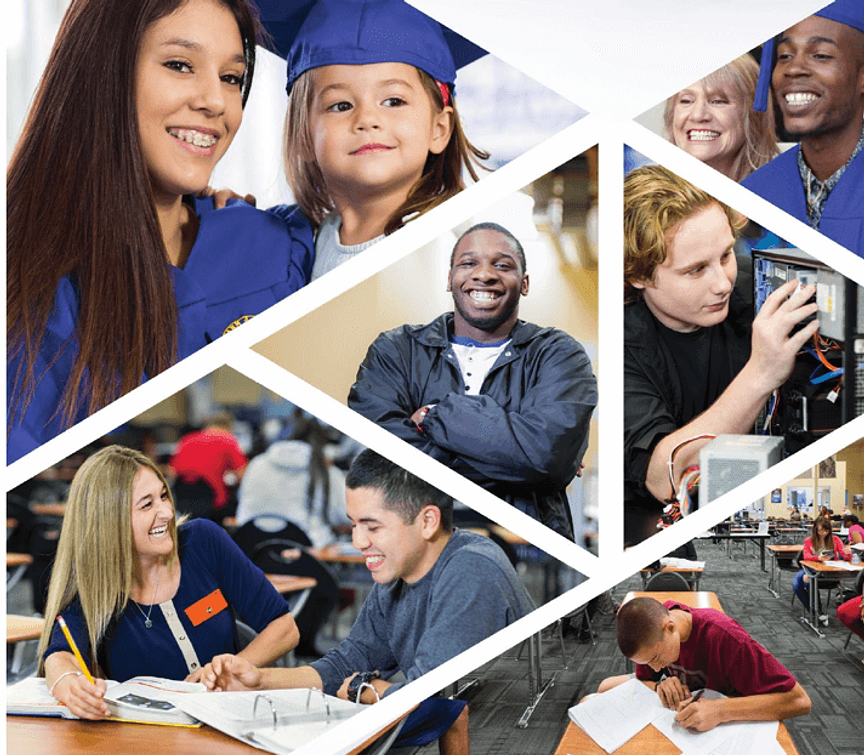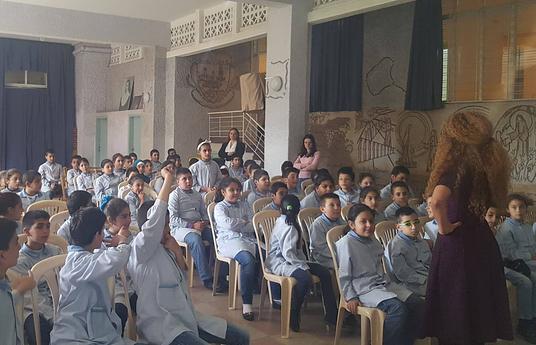Our philosophy is simple. Remove every barrier to student learning. Here are examples:
Reality 1: Students enter reading on a fifth-grade level; Solution 1: Learn4Life provides one-on-one tutoring and small group instruction reintroducing students to decoding and rebuilding skills and knowledge that others learn earlier.
Reality 2: Students enter doing math on a sixth-grade level; Solution 2: Learn4Life provides one-on-one tutoring and small group instruction reintroducing students to basic math facts and vocabulary needed as scaffolding to support algebraic concepts and more advanced work.
Reality 3: Students have not been appropriately identified for special education services; Solution 3: Learn4Life assesses the special learning needs of each student within the first 30 days.
Reality 4: Students are English Learners; Solution 4: Learn4Life provides explicit English instruction by teachers trained to address their needs and materials/technology tailored to learning English.
Reality 5: Students are pregnant or have babies they need to care for; Solution 5: Learn4Life encourages students to bring their babies to school with them and provides access to community services, parent training, and health care, as well as free diapers, toys, and food.
Reality 6: Students have to work to support their families; Solution 6: Learn4Life arranges for students to come to school at a time consistent with their work hours and supports their independent work, as they show both proficiency and progress.
Reality 7: Students don’t decide to restart their education at the beginning of set semester calendars; Solution 7: Learn4Life’s calendar is year-round and students may matriculate on any day, starting instruction at whatever level they are academically.
Reality 8: Students have trouble juggling five or six classes at a time, plus probation, parenting, counseling and/or work; Solution 8: Learn4Life supports students taking as few as two classes at a time, but more intensively, to keep them learning and making progress.
Reality 9: Students dislike the social pressure of lunch, recess and other downtimes in traditional high schools; Solution 9: Learn4Life requires students to eat when they are hungry and take breaks as needed in order to stay focused on learning.
Reality 10: Students have to change schools or miss class due to external factors, losing credit for work done when they can’t finish a semester; Solution 10: Learn4Life arranges the curriculum so students can finish credits on a weekly and monthly basis, ensuring they don’t have to re-do work they have already done.
Reality 11: Students are or become homeless; Solution 11: Learn4Life introduces them to social services and resources to get off the street and into safe, secure housing.
Reality 12: Students need more time to make up for years of struggle; Solution 12: Learn4Life works with students up to age 26, ensuring that they never give up.
Reality 13: Students need a job; Solution 13: Learn4Life works with local employers to define the training requirements for good paying jobs then implements career standard certification courses for students.
Reality 14: Students want to go to college; Solution 14: Learn4Life assesses their learning needs to be ready and qualified for college, then supports them in fulfilling their goals. We build dual-enrollment programs with local colleges so that students can graduate high-school with confidence and some college completed.
Reality 15: Students want to know how what they are studying is relevant; Solution 15: Learn4Life arranges for experiential learning opportunities and trips aligned with the course curriculum.
Reality 16: Students forget to or simply can't come to school; Solution 16: Learn4Life calls/texts tardy students, makes regular home visits and provides bus passes.
Reality 17: Students are victims and/or perpetrators of family and neighborhood violence; Solution 17: Learn4Life trains all of its staff in trauma informed care and awareness as well as providing onsite counseling for students and staff experiencing trauma. AND
Reality 18: Life happens; Solution 18: Learn4Life always welcomes students back and enables them to pick up where they left off, even in a different center, always.

 (2) (1).jpg)

